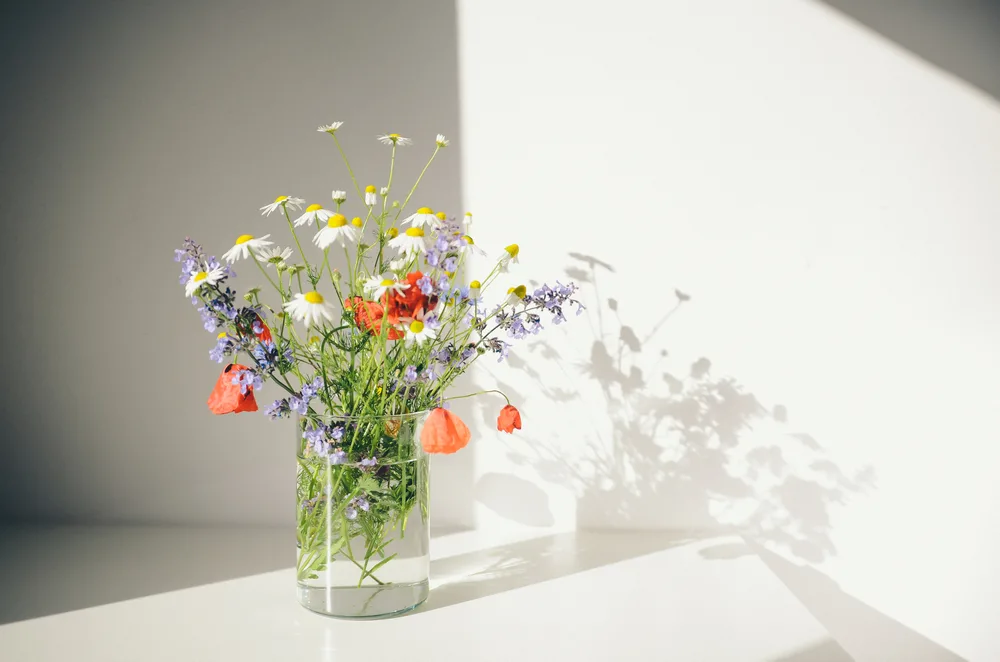
There’s no better way to spruce up your home than with a bouquet of freshly cut flowers. Whether purchased from your local florist or brought indoors from your own cut flower garden in your backyard, fresh flowers add a welcoming touch difficult to find in regular home décor.
Unfortunately, these benefits don’t last very long.
Have you ever admired your stunning upstanding bouquet one afternoon, only to look back the next morning and find a puddle of petals disintegrating around the vase?
We’ve all been there. It seems there is never enough time to appreciate the beauty of the flowers before they are gone.
If you find yourself facing this problem often, there is a solution. Actually, there are many solutions.
There are two keys to long-lasting cut flowers – subsidizing what they are missing from the main plant and preventing bacterial growth in stagnant water. There are several ways to fulfill these two goals, all of which are simple, effective, and inexpensive.
Florists have been harboring the secrets to long-lasting cut flowers for years, ensuring they stay fresh until they reach your home. Now, you can use these tricks to keep them lasting as long as possible inside your home too.
Cut the Stems Frequently
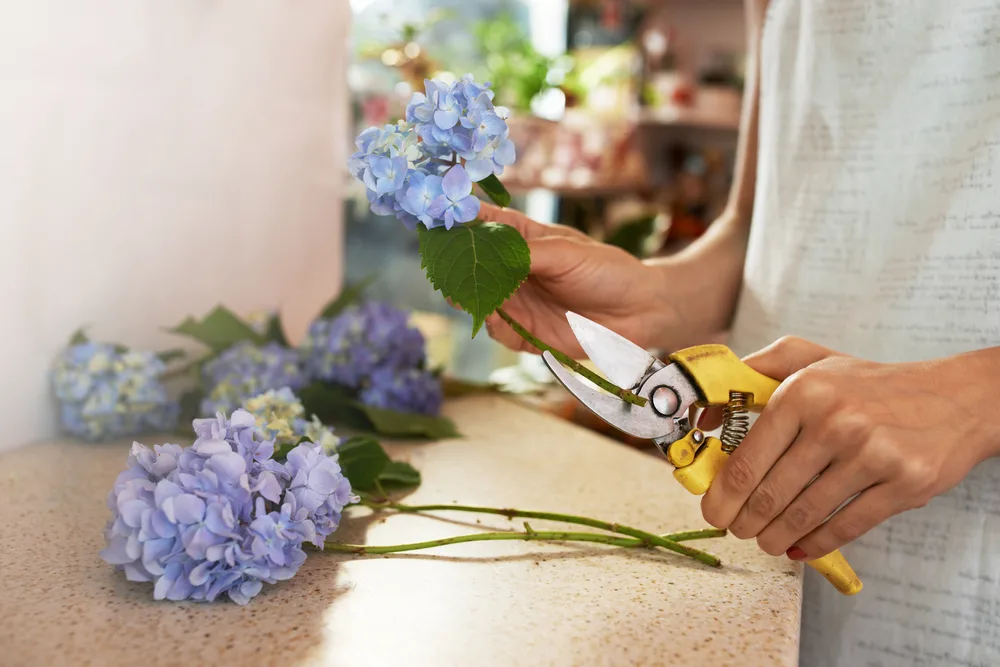
Plant stems are amazing structures. They act as essential transport systems, delivering water and nutrients to all parts of the plant that need it. They keep the flowers upright and strong. And, they respond to plant damage by sending all available resources to heal any wounds – like cutting an entire stem off the plant.
If you’ve ever taken a look at the ends of the stems of a purchased bouquet of flowers, you’ll notice they don’t look like the stems cut from your garden. They appear hardened as if there are growths developing along the cut. This is part of the plant’s defense system. The stem seals off lesions to prevent any harmful bacteria from damaging the interior structure of the plant.
Unfortunately, that seal also limits the stem from drawing up water (and any essential nutrients added to the water to make the flowers last longer). And without water to keep them going, most fresh-cut flowers will die in a matter of days.
To combat this phenomenon, always give the flowers an extra cut once you bring them inside.
You will likely need to cut them to fit the size of the vase anyway, but giving them an extra snip will prolong their life too. Cut the stems at a 45-degree angle to increase the surface area of the cut to allow the plant to take up more water.
To go the extra mile, you can continue cutting the stems every few days to ensure they are getting all the water and nutrients they need.
Pull Off Excess Leaves
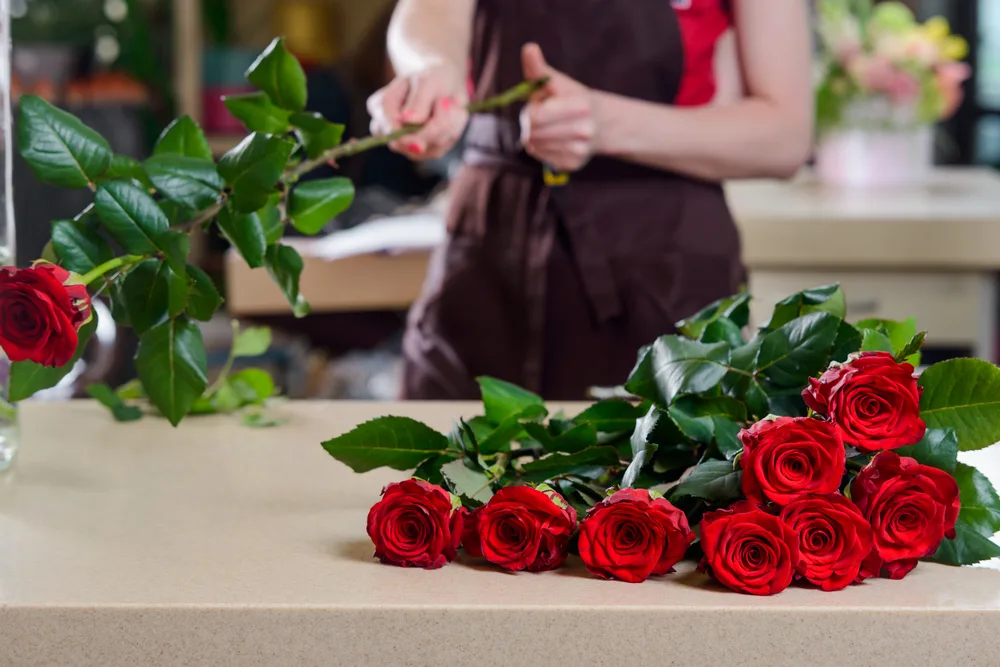
This is one practice many regular flower purchasers do automatically. Cut flower stems often come covered in a thick layer of leaves that crowd the vase and don’t look particularly appealing sitting in water, so we strip them.
However, stripping excess leaves is not only essential for aesthetic purposes.
It also serves an important function in keeping your flowers living for longer.
Most gardeners know the standard rules of plant watering methods – never water overhead and water in the morning to prevent water gathering on the leaves. This prevents bacteria from developing on the plant as a result of excess moisture.
The same principle applies to your cut flowers.
When you allow leaves to sit in water for extended periods, they begin to rot and attract harmful bacteria and unwanted bugs. This isn’t good for the longevity of your cut flowers, or for your home in general. It is vital to keep the vase water as clean as possible to ensure your flowers stay fresh. Soaked leaves are not the way to do it.
Before placing your flowers in the vase, measure where the water line ends and remove any leaves below that point. You’ll be limiting the foliage to keep the focus on the flowers and making their beauty last longer at the same time.
Change the Water Often
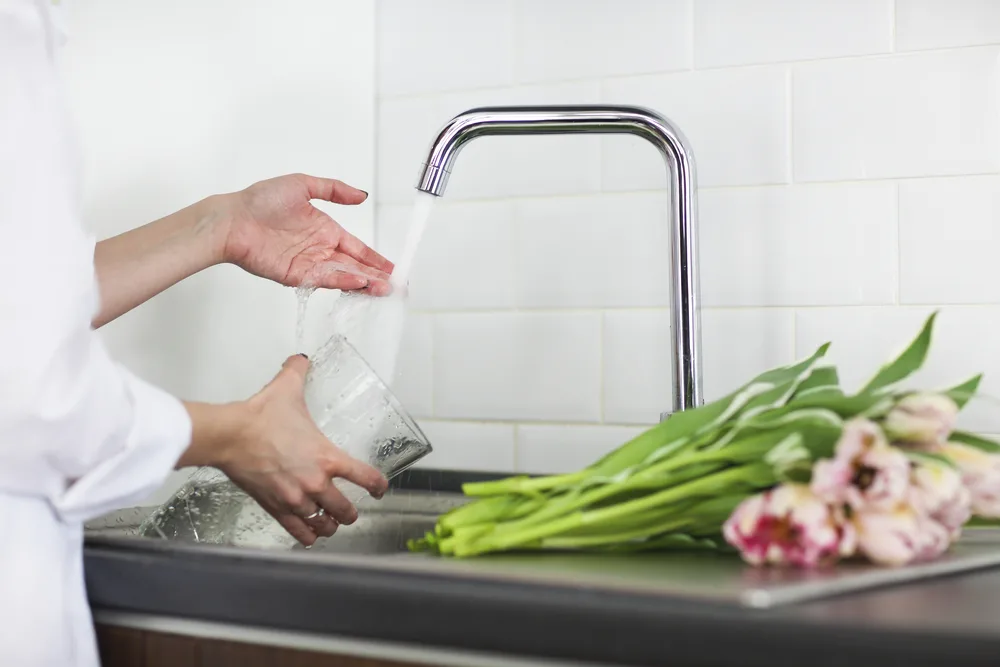
Speaking of keeping the water clean…
This trick is one many of us forget about. Once we bring the flowers home, place them in a vase, and display them proudly, we think the bulk of our work is done. But if you want to keep the bouquet longer than a couple of days, the work is just beginning.
While it may be tedious, changing the water frequently is essential to keeping cut flowers fresh.
You wouldn’t want to drink water that’s been sitting around for four days. Why should your flowers have to?
This is especially true if the water has begun to change color, indicating the presence of bacteria. While some gardeners recommend a top-up with fresh water as it evaporates, this won’t remove anything damaging lurking within the water. You’ll need to replace it all to get the most out of your flowers.
Change your water every two days at a minimum to prevent it from becoming cloudy.
If you forget to change the water and it becomes visibly dirty, scrub the vase before replacing the water to remove any harmful bacteria.
Whenever you stop to admire the beauty of your bouquet, take a second to change the water. It will only keep their beauty alive for longer.
Keep Them Out of the Sun
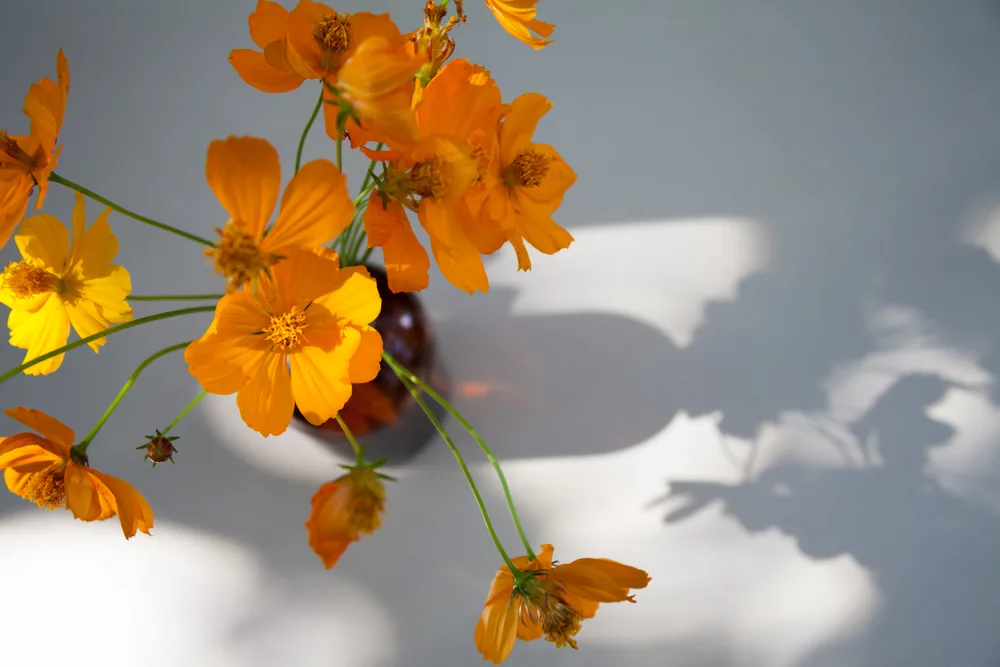
Out in the garden, plants need plenty of direct sunlight in order to produce the flowers we want to bring indoors. Following that sound logic, you may want to keep your cut flowers in the sun to maintain their outdoor vibrance. Unfortunately, it is far more likely to have the opposite effect.
To produce the energy required to make flowers, plants need sunlight for photosynthesis. Once those flowers are produced, chopped off, and stripped of all their leaves, the sun no longer plays a role in their longevity. Cut flowers placed in the sun will only dry out quicker, with the flower heads wilting faster too. If there is any sure-fire way to cause your flowers untimely demise, this is it.
Keep the flowers in the coolest part of your home away from any direct sunlight.
Also, keep them away from draughts from open windows to slow the drying process. As a bonus, this will also slow water evaporation, ensuring you won’t need to top up every couple of hours.
Soda

While the previous four tricks are commonly advised, there are several others that are more… obscure. They may seem like terrible internet hacks with no basis in reality, but trust me – there is sound science backing them. And the first of these ‘hacks’ is adding soda to your vase water.
Soda provides two benefits to cut flowers – sugar and acidity.
The sugar feeds the flowers (as they have been removed from their original food source) and the acidity causes the stems to draw up the water faster. Add ½ a cup of soda to a full cup, depending on the size of your vase.
Soda may encourage bacterial growth, so it’s still important to change out the water often, adding more soda each time. To keep an eye on the cleanliness of your water and your vase, choose a clear soda. Make sure it’s not sugar-free either, or you’ll miss the benefits altogether.
Vodka
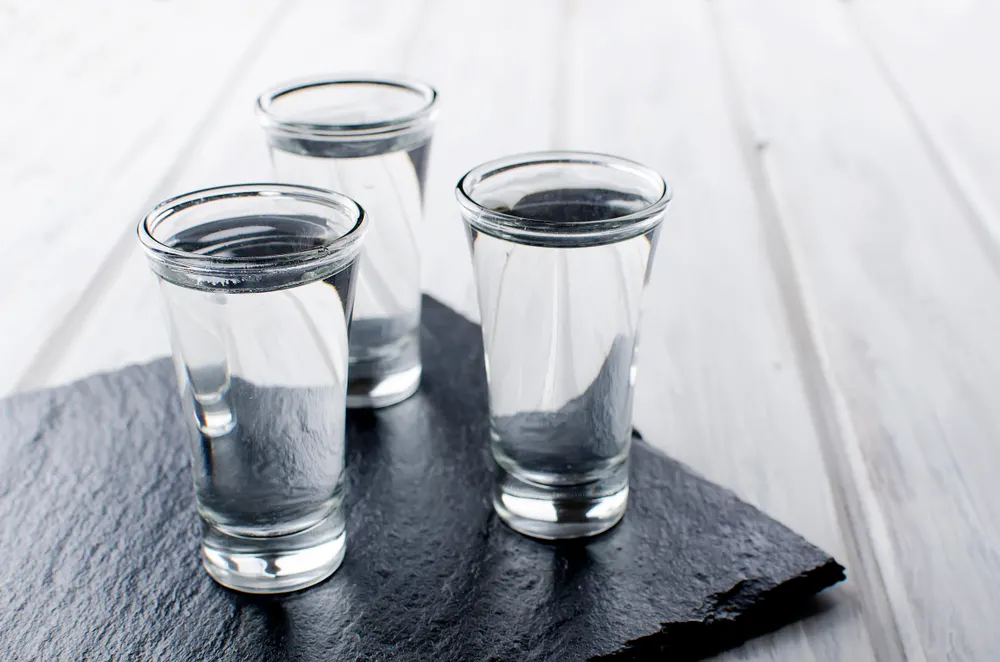
Staying in the drinks cupboard, if you’re out of soda you may want to reach for the vodka instead. While it won’t feed your flowers, it performs an essential function – limiting ethylene production.
Ethylene is a gas that facilitates the ripening process. It is present in your veggie garden and your cut flower garden, causing flowers to open and mature.
By adding vodka to your vase water, you can slow down this ‘ripening’ process, preserving the flowers. It may not last forever, but it will certainly delay the aging of the flowers, keeping them fresh for a few more days. It is also believed to inhibit bacterial growth, keeping the water cleaner for longer.
And best of all, you don’t need much to get started. Even the last few drops of an old bottle at the back of your cupboard will do. The high concentration of alcohol in vodka tends to overwhelm the flowers in large quantities. Simply add a few drops of this clear spirit to your water for the best results.
Bleach
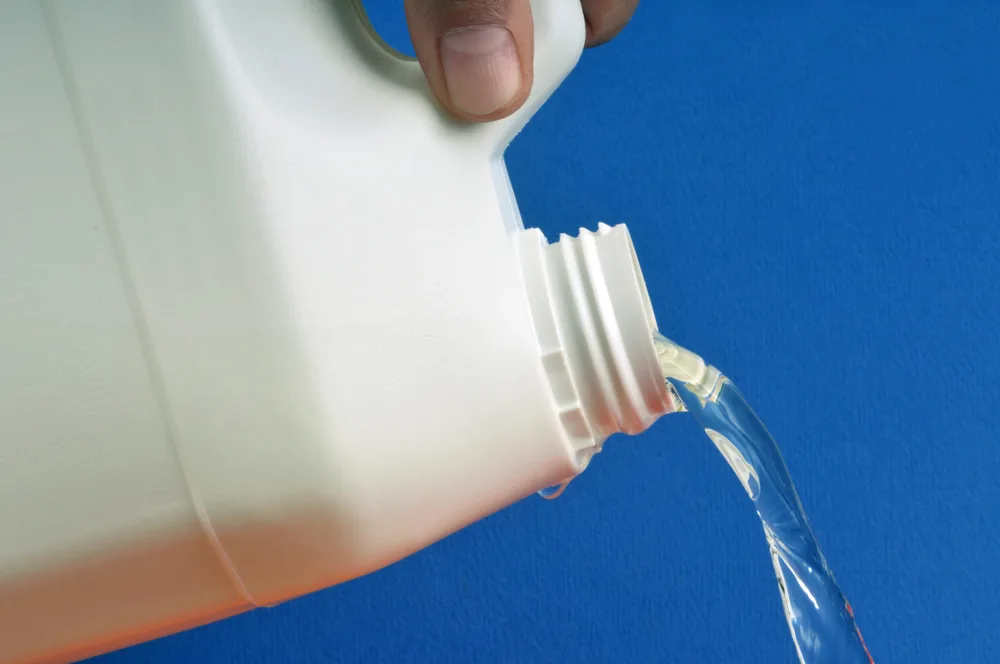
To tackle bacterial growth in your vase, you can adopt a product used to combat bacterial growth in our homes – bleach. Bleach is recommended for a range of cut flower ailments – rotting stems, cloudy water – but its bacteria-fighting properties are the number one benefit.
By adding a tiny amount of bleach to the water (less than a teaspoon), your water will stay clean and bacteria-free, leaving your flowers to thrive in a happy environment.
Bleach does come with one negative side effect: changing the pH of the water. Bleach is a basic substance, and cut flowers far prefer acidic environments. To prevent this problem, only use the smallest amount of bleach. Never combine this hack with any other tricks using acidic substances, as the mixture of bleach and acids like vinegar releases dangerous chemicals.
Apple Cider Vinegar & Sugar
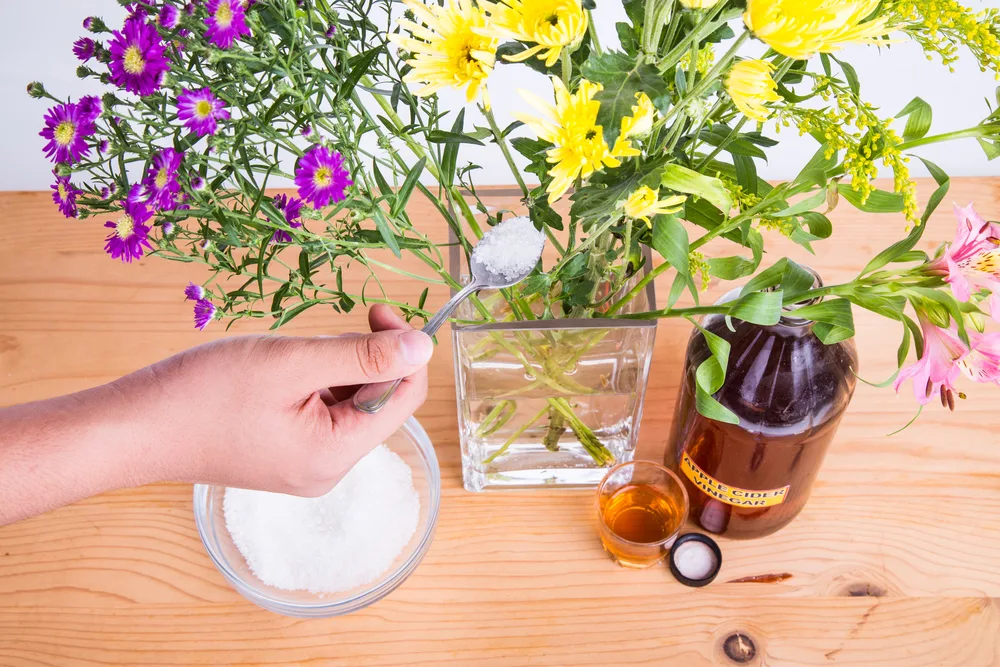
While some of these tricks target one element of cut flower growth, this one targets them all.
As we already know from the soda hack, sugar serves as a kind of plant food, giving the flowers what they have been deprived of once removed from the plant. While sugary soda is certainly a way to deliver that food, a plain teaspoon of regular sugar will have the same effect.
Unfortunately, sugary water also encourages bacterial growth. By bringing in the second component of this trick – apple cider vinegar – this bacterial growth is limited.
The flowers get their food without sitting in dirty water. And, as a bonus, the acidity also improves water uptake, ensuring that food gets delivered even quicker.
In the realm of floral hacks, this trick is certainly the full package.
Fridge
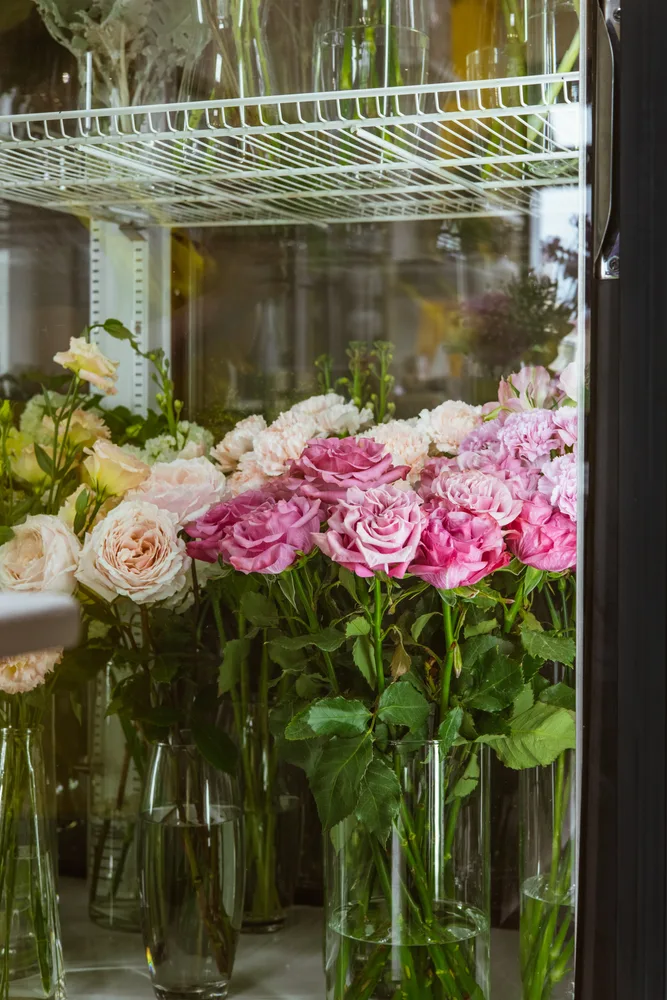
Last but not least, we have the trick guaranteed to preserve your flowers for longer than any of the other methods combined. Simply stick your vase of flowers in the fridge overnight, bring them out in the morning, and they will stay good as new for at least double the amount of time.
The lower temperatures slow the flower maturing process.
Fridges also keep the flower heads cool to prevent drying and wilting. By keeping your flowers cool overnight for a good eight hours, they will still look as good as the day you bought them more than a week later.
Keep these nine tricks up your sleeve for your next cut flower feature. Their beauty may be fleeting, but you can extend it just that little bit longer to make cutting flowers from your garden or purchasing them from your local florist all the more worthwhile.

Get the famous Rural Sprout newsletter delivered to your inbox.
Including Sunday musings from our editor, Tracey, as well as “What’s Up Wednesday” our roundup of what’s in season and new article updates and alerts.

